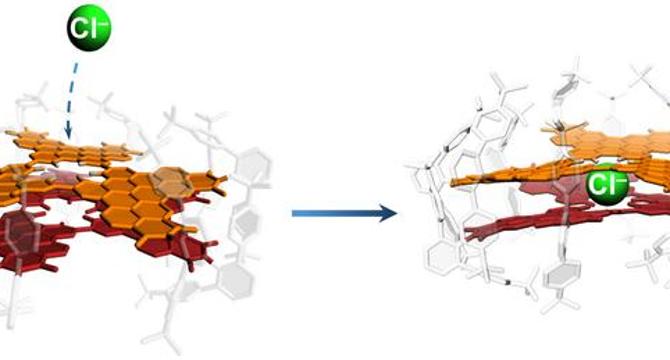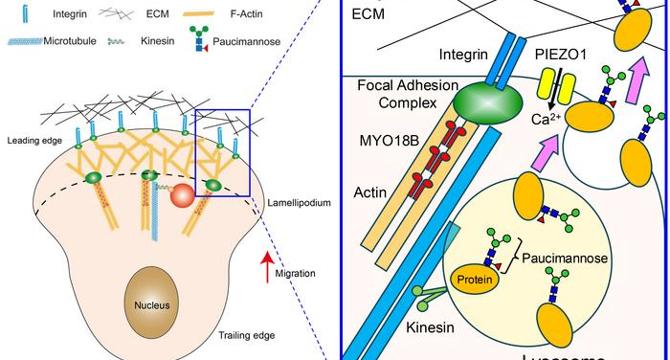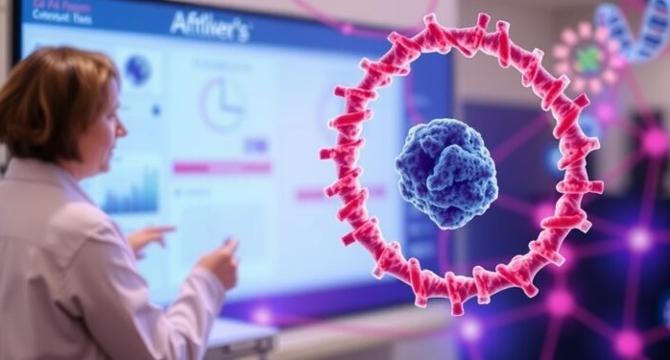Bio News
Bioengineer
46

Image Credit: Bioengineer
Revolutionizing Lung Ultrasound: Empowering Nonexperts with AI Technology
- A multicenter validation study showed that AI-assisted lung ultrasound is as efficient as the most experienced sonographers.
- Lung ultrasound is a diagnostic tool that can detect respiratory illnesses.
- Traditionally, the effectiveness has depended on the skill set of the sonographer.
- AI technology can bridge the gap and democratize the use of advanced imaging techniques.
- By providing real-time assistance and feedback, AI can lower the barrier for effective diagnosis.
- AI-assisted imaging results can be equivalent to that of seasoned professionals.
- AI can change the educational curve of healthcare professionals when utilizing lung ultrasound.
- Lung diseases remain a significant global health challenge.
- AI can broaden the reach of imaging services, allowing early identification and management of lung conditions, leading to better patient outcomes.
- Ethical considerations surrounding the implementation of AI in healthcare are also crucial.
Read Full Article
2 Likes
Bioengineer
290

Image Credit: Bioengineer
Novel AI-Engineered Proteins Effectively Counteract Snake Venoms
- Researchers have designed innovative proteins that can neutralize lethal toxins found in snake venom.
- The newly designed AI-generated proteins provide significant protection against lethal doses of three-finger toxins in mice, achieving survival rates ranging from 80% to 100%.
- The designed antitoxins can be created through microbial synthesis, reducing costs and making treatments more accessible and affordable.
- The methodologies employed in this study could be beneficial for tackling other diseases and lead to the emergence of less expensive medicines.
Read Full Article
17 Likes
Bioengineer
193

Image Credit: Bioengineer
Graphene Achieves Ion Permeability: A Breakthrough in Material Science
- Researchers have engineered a double-layered nanographene structure that can trap fluoride, chloride, and bromide halide ions within a confined cavity and exhibit selective permeability. The successful creation of this model has implications in water purification technologies, selective ion detection systems, and the development of synthetic membranes exhibiting targeted ion transport capabilities. The research team aims to analyze the flow of ions more comprehensively, mimic biological ion channels, and investigate larger stacks of nanographenes to optimize other nanostructured materials in various applications. This breakthrough underscores not only the capabilities of modern materials science but also the profound implications of such discoveries.
- Selective ion binding and high permeability of chloride through the nanographene lattice pave the way for potential advancements in water purification technologies and selective ion detection systems.
- By refining and expanding the design of defect-engineered materials, future studies will likely delve deeper into harnessing graphene’s capabilities for tackling modern day challenges.
- The funding and resources for this pioneering research were generously provided by the German Research Foundation, highlighting the crucial support from academic institutions for innovative studies that promise to enhance technological capabilities.
- The intersection of chemistry, engineering, and biology showcases the boundless potential waiting to be unlocked within materials like graphene, propelling researchers towards future discoveries that may one day change the fabric of technology as we know it.
- The study not only holds practical applications but also provides insights into material interactions at the molecular level and unique properties of advanced materials.
- The successful engineering of selective permeability in nanographenes emphasizes the potential for versatile, highly functional nanomaterials equipped to tackle modern day challenges.
- The prospects for expanding the functionality of nanographenes are promising, with future studies likely refining and expanding the design of defect-engineered materials to harness graphene’s capabilities.
- As knowledge advances, so too does the possibility of translating theoretical discoveries into practical applications that could transform industries and improve the quality of life globally.
- The collaborative efforts and innovative ideas burgeoning from institutional support will undoubtedly pave the way for a brighter, more efficient technological future.
Read Full Article
11 Likes
Bioengineer
163

Image Credit: Bioengineer
Convergence of Mutations Fuels Autoimmune Disease Linked to Infections
- Researchers at the Garvan Institute of Medical Research in Sydney, Australia, have identified a novel mechanism that calls into question the traditional “molecular mimicry” theory behind autoimmune responses.
- Their research highlights the role of hepatitis C virus (HCV) in inducing autoimmune reactions, specifically cryoglobulinemic vasculitis, instead of the traditional hypothesis of viral proteins mimicking host proteins.
- Advanced single-cell analysis and whole-genome sequencing revealed the presence of rogue clones of B cells, leading to the development of cryoglobulinemic vasculitis.
- Rather than an immune system confused by viral mimicry, it appears that the viral context establishes an environment conducive to aberrant B cell mutation and proliferation.
- This discovery, which has larger implications for autoimmune disease treatment and prediction, could lead to targeted therapies aimed at addressing the root cause of these diseases.
- Moreover, the research captures how a “perfect storm” of genetic mutations occurs in the presence of chronic viral infections.
- These findings could lead to innovative approaches to autoimmune disease treatment, shifting from symptomatic management towards understanding and intervening at the genetic level.
- Ultimately, this new understanding could enable healthcare professionals to refine treatment approaches for those at risk of developing autoimmune complications following viral infections.
- The Garvan Institute researchers are dedicated to investigating the complex interactions between pathogens and the immune system to pave the way for innovative therapies for patients suffering from autoimmune diseases that arise due to chronic infections.
- Overall, this discovery offers an exciting avenue for future research and therapeutic development, targeting the causative processes that underpin autoimmune disease development stemming from viral infections.
Read Full Article
9 Likes
Discover more
Bioengineer
231

Image Credit: Bioengineer
Revolutionary Deep Learning Techniques Develop Proteins to Combat Lethal Snake Venom
- Recent advancements in protein design have led to the development of innovative proteins that can neutralize elapid snake venom toxins, as per a study published in prestigious journal Nature. Using deep learning and computational methods, the team was able to design new proteins, which demonstrated impressive thermal stability and strong binding abilities. Experimental screening yielded promising candidates, and the proteins closely matched their computational designs, highlighting the effectiveness of the deep learning methodology employed. Not only can these proteins be produced using recombinant DNA technologies, but their small size could facilitate their rapid penetration into tissues, enhancing their effectiveness in neutralizing toxins promptly and mitigating damage caused by snake venom.
- Current treatments for elapid snakebites can be expensive and show limited effectiveness in neutralizing three-finger toxins. Designed proteins can revolutionize antivenom treatments and serve as antidotes for numerous other medical applications. These proteins are scalable and can be synthesized based on computational designs, relieving the logistical burden. Since they are relatively small, they can effectively neutralize toxins promptly and have the potential to transform therapeutic landscapes in affected regions.
- This study exemplifies how targeted research efforts and technological integration can yield breakthroughs that not only advance scientific knowledge but also provide tangible benefits to society, further emphasizing the urgent need for continued investment in these promising avenues for human health. It highlights the importance of interdisciplinary approaches in tackling complex health issues and reinforces the remarkable potential for innovation in addressing long-standing global health dilemmas.
- Over 2 million people worldwide fall victim to snakebites annually, leading to over 100,000 deaths and leaving many with permanent disabilities. Regions most affected by this public health challenge include sub-Saharan Africa, South Asia, and parts of Latin America, where poisonous snakebites are a constant concern. The development of these designed proteins can change the lives of millions worldwide.
- Since the proteins can be produced with consistent quality, the computational design methodology could usher in a new era for antivenoms, permitting more equitable access to effective therapeutics globally. In addition, computational design techniques may extend to developing treatments for other under-researched diseases affecting vulnerable populations. This research project represents a collaboration of leading experts in biochemistry, drug design, and tropical medicine and showcases the remarkable potential for innovation in medical science.
- Utilizing innovative protein design and advanced computational techniques, researchers have laid the groundwork for safer, more effective snakebite treatments that could transform therapeutic landscapes in affected regions. As the research continues, these designed proteins represent a pivotal moment in addressing a significant global health crisis impacting millions and offer hope for improved therapeutics for snakebite victims.
- The University of Washington has submitted a provisional U.S. patent application for the proteins designed through this research, ensuring its intellectual property rights. The potential of these newly engineered proteins to transform snakebite treatment and significantly impact global health cannot be overstated.
- The successful integration of cutting-edge technology with biological sciences showcases the remarkable potential for innovation in addressing long-standing global health dilemmas. As the world looks towards the future, targeted research efforts and technological integration could yield breakthroughs that advance scientific knowledge while also providing tangible benefits to society at large.
- Antivenins, protein design, recombinant proteins, drug design, drug research, venom, and deep learning are some of the critical keywords associated with this research.
Read Full Article
13 Likes
Bioengineer
361

Image Credit: Bioengineer
Study Reveals Songbirds Engage in Social Behavior While Migrating
- A recent study conducted by the University of Illinois Urbana-Champaign analyzing over 18,300 hours of recorded flight calls reveals that songbirds may establish social ties with other species while on the move.
- The research challenges the notion that songbirds exclusively rely on ancestral migratory routes, instead suggesting that social dynamics among species may significantly influence their migratory behaviors.
- Flight calls not only communicate a bird’s species, age, or sex but might also act as signals for navigation and the identification of suitable resting areas.
- Specific physical attributes, such as wing length, as well as the vocal similarities of the birds, played a vital role in these associations.
- While social learning may be instrumental in certain contexts, it may not be as predominant during actual migration, illustrating the complexity of avian social structures and behaviors.
- The study presents fascinating preliminary insights, which open the door for further exploration into the realm of avian behavior.
- Understanding the social dynamics of nocturnal migration may have far-reaching consequences, particularly in the context of environmental changes and habitat loss.
- As songbird populations face unprecedented challenges due to climate change, preserving their migratory pathways may hinge on acknowledging and safeguarding the social relationships that underpin their journeys.
- By acknowledging and preserving the social bonds that facilitate migration, we can better equip ourselves to safeguard the future of migratory birds in a rapidly changing environment.
- The ongoing exploration of these dynamics serves as a reminder of the complex interplay between instinct, environment, and social interaction in the natural world.
Read Full Article
21 Likes
Bioengineer
231

Image Credit: Bioengineer
Revolutionary Geometric Machine Learning Technique Set to Propel Precision Drug Development Forward
- Researchers have used geometric deep learning to create a new class of proteins that exhibit desired molecular surface properties.
- The breakthrough approach is called 'Molecular Surface Interaction Fingerprinting', or MaSIF, which amalgamates machine learning with traditional molecular biology.
- The MaSIF model's simplicity consists of only 70,000 parameters, focusing increasingly on the most crucial surface features.
- The ability to design 'switchable' protein interactions could potentially revolutionize the current landscape of drug therapy.
- Additionally, AI-driven methodologies could unlock some of the mysteries of protein interactions and protein engineering.
- The approach enables researchers to extract insights from complex biological systems without losing sight of the meaningful interactions at play.
- The researchers synthesized several protein binders that were specifically engineered to interact exclusively with certain drug-bound protein complexes.
- The MaSIF technique proves that AI can effectively enhance our understanding of protein-ligand interactions.
- Engineered proteins could be utilized for more effective drug delivery systems, diagnostic tools, or even as new therapeutic agents on their own.
- This research offers a framework for future explorations and suggests that the understanding of protein interactions will deepen, leading to a burgeoning field of study.
Read Full Article
13 Likes
Bioengineer
412

Image Credit: Bioengineer
Long-Term DNA Damage: Rethinking Our Understanding of Mutations
- Researchers at the Wellcome Sanger Institute discovered that certain types of DNA damage can elude repair processes, allowing them to persist for extended periods, sometimes even years. These persistent DNA damages can cause numerous mutations over time, potentially leading to the onset of cancer.
- The study identified specific forms of DNA damage that evade repair processes using genomic analysis techniques. The team traced the lineage of cellular evolution back to common ancestors, highlighting intricate relationships within cellular populations and unexpected behavior of DNA damage.
- The research underscores the importance of understanding which types of DNA are most likely to result in malignant transformations. The presence of persistent DNA damage increases the probability of deleterious mutations occurring within the genome.
- The study included an assortment of cell types, such as blood stem cells, bronchial epithelial cells, and liver cells, providing a well-rounded examination of how different cell types handle DNA damage.
- Between 15 to 20 percent of mutations in blood stem cells stem from stubborn DNA damages, the study found. Researchers propose that although these types of DNA damage are relatively uncommon, their ability to remain unchanged within the genome for extended durations means they have the potential to generate a mutation load comparable to that of more frequent forms of DNA damage.
- Insightful perspectives shared by the study’s authors highlight the revolutionary nature of these discoveries. The study enriches our understanding of how cellular adaptations to DNA damage evolve over time.
- The mechanisms behind why this long-lived DNA damage appears exclusively in blood stem cells remain elusive. These unanswered questions open new trajectories for future research aimed at identifying the molecular underpinnings of such DNA damage.
- These findings challenge previous thought about the fundamentals of mutation acquisition and might influence the design of studies focused on understanding the genetic basis of cancer and potential interventions to rectify such mutations.
- The study serves as a beacon for the future of genomic research. Researchers hope to devise strategies to combat the genetic changes that contribute to cancer and improve therapeutic approaches for affected individuals.
- Understanding how these long-lasting lesions arise and impact cellular integrity will be critical in the fight against cancer. The continuous advancements in our understanding of cellular behaviors related to DNA damage promise to bring about innovative strategies in healthcare and cancer management.
Read Full Article
24 Likes
Bioengineer
4

Image Credit: Bioengineer
NUS Medicine Uncovers Promising New Approach for Colorectal Cancer Treatment
- Researchers at NUS Medicine in Singapore have discovered that Dual-Specificity Phosphatase 6 (DUSP6) plays a key role in promoting colorectal cancer (CRC) tumor growth.
- Experimental evaluations have shown that CRC cells with high levels of DUSP6 proliferate about 40% more than those with lower levels, according to the study which was published in Nature Communications.
- Clinically, high DUSP6 expression is linked to patients with an unfavorable prognosis and reduced survival rates.
- DUSP6 acts as a “switch-off” mechanism and regulates cell signalling pathways.
- Under physiological conditions, DUSP6 stops cellular proliferation by inactivating ERK1/2, which is crucial for cell growth, repair, and survival.
- However, DUSP6 exhibits tumor-promoting characteristics in colorectal cancer, presenting a new opportunity for targeted cancer therapy.
- The research team, led by Associate Professor Zhang Yongliang from NUS Medicine’s Department of Microbiology and Immunology, is exploring new therapeutic avenues to mitigate the damaging effects of DUSP6 in CRC.
- The study also revealed the protective role of DUSP6 for the cancer cells against the degradation of Notch1.
- Notch1 pathway governs essential cellular functions such as proliferation, differentiation and apoptosis, but its signaling is often dysregulated in CRC, resulting in enhanced tumor growth and poor patient prognosis.
- By inhibiting DUSP6, therapeutic interventions could restore Notch1’s normal regulatory effects, potentially leading to favorable outcomes for CRC patients.
Read Full Article
Like
Bioengineer
403

Image Credit: Bioengineer
Syracuse University’s Fran Brown Receives Paul ‘Bear’ Bryant Newcomer Coach of the Year Award
- Fran Brown, head coach at Syracuse University, was named the 2024 Paul “Bear” Bryant Newcomer Coach of the Year Award by the American Heart Association.
- Coach Brown made an immediate impact in his first season, leading Syracuse to a 10-win season, their first since 2018.
- His strategic acumen and commitment to excellence have revitalized the football program and positioned it for continued success.
- Under Brown's guidance, Syracuse won against formidable opponents and clinched a place in the postseason bowl, capping off an outstanding season with a hard-fought victory against Washington State.
- Coach Brown's effective leadership style was developed through previous coaching roles at Temple University, Baylor University, and the University of Georgia, where he coached defensive backs and coordinated defense strategies.
- His experience and expertise in the sport culminated in his elite offensive attack, driven by standout performances from quarterback Kyle McCord and tight end Oronde Gadsden II.
- Beyond honoring coaching excellence, the Bear Bryant Awards focus on promoting awareness of cardiovascular health issues affecting many individuals.
- Fran Brown's recognition represents the transformative effect that coaches have on football programs and society as a whole.
- The accolades serve as inspiration for future generations of coaches and athletes to strive for excellence, both on and off the field.
- The ceremony will be an important platform for discussing health initiatives and inspiring efforts toward eliminating cardiovascular diseases.
Read Full Article
24 Likes
Bioengineer
243

Image Credit: Bioengineer
Exploring the Connection Between Lysosomal Function and Focal Adhesions: Implications for Cancer Research
- A recent study has shown the potential role of upregulated paucimannose glycans in various cancer cell lines as biomarkers or therapeutic targets.
- Lysosomal exocytosis is a cellular process that has implications in cancer biology and is important to investigate in relation to adhesion and migration.
- The study explores how focal adhesions, structures that anchor cells to the extracellular matrix, interplay with lysosomal exocytosis.
- The relationship between lysosomal exocytosis and focal adhesions suggests that lysosomes may have roles beyond waste management in cancer progression.
- A specific gene, MYO18B, has been identified as a pivotal regulator of lysosomal exocytosis, particularly influencing the maturation of focal adhesions.
- The study articulates a critical hypothesis that the increased levels of paucimannose glycans could be a direct consequence of dysregulated lysosomal exocytosis in cancer cells.
- Understanding these changes at the molecular level is essential for devising novel therapeutic approaches, highlighting a burgeoning field within glycobiology that warrants exhaustive exploration.
- Emerging techniques in live cell imaging allow for real-time observation of cellular behaviors that were previously difficult to elucidate.
- Collaborative efforts between institutions dedicated to glycoprotein research and cancer therapeutics are presented with a unique opportunity to connect the dots between basic science and clinical applications.
- The engagement of multidisciplinary teams will be paramount in transmuting basic research into viable cancer treatments.
Read Full Article
14 Likes
Bioengineer
340

Image Credit: Bioengineer
ASAP Introduces New Funding Opportunity for Collaborative Research Network in Parkinson’s Research
- The Aligning Science Across Parkinson’s (ASAP) initiative has launched a new funding opportunity for the scientific community to contribute to the advancement of knowledge surrounding Parkinson’s Disease (PD).
- The initiative’s Collaborative Research Network (CRN) 2025 Scientific Track is designed to tackle the heterogeneity of PD and emphasizes the intricate ways in which the disease manifests and progresses across various populations.
- The call for research focuses on six areas designed to tackle the disease’s inherent heterogeneity, such as the interplay between aging and Parkinson’s disease, the influence of co-pathologies on PD pathogenesis, and environmental factors that play a role in the development and progression of Parkinson’s disease.
- Collaboration is a cornerstone of this initiative, with multidisciplinary and multi-institutional teams fostering diverse perspectives and expertise, ultimately driving innovation and accelerating the pace of discovery.
- Successful teams will benefit from an impressive funding pool of up to $3 million per year, sustained over three years, with funding decisions expected in January 2026.
- The impact of these research efforts extends far beyond academia and holds significant implications for the lives of individuals affected by Parkinson’s disease. Findings could lead to the development of novel therapeutics and intervention strategies that could meaningfully improve patient outcomes.
- By adhering to ASAP’s Open Science Policy and encouraging transparency in research processes, the initiative aims to cultivate an open and collaborative scientific community.
- Thus, the potential for transformative discoveries within Parkinson’s disease research has never been greater, as researchers embark on a journey that aims to restore hope by improving the quality of life for millions affected by this debilitating disease.
Read Full Article
20 Likes
Bioengineer
21

Image Credit: Bioengineer
Wyss Institute Collaborates with DARPA-ABC to Advance Understanding of Anesthesia and Develop Safer, Less Monitored Drug Alternatives
- A collaboration led by the Wyss Institute for Biologically Inspired Engineering at Harvard University is working to delve deeper into the fundamental mechanisms of anesthesia and synthesize a novel category of drugs capable of inducing a state mimicking anesthesia, but without the perilous side effects.
- Under a groundbreaking contract with the Defense Advanced Research Projects Agency (DARPA), this initiative boasts a projected investment of up to $18.8 million over three years.
- The researchers are harnessing the expertise from varied fields including molecular and cellular biology, neuroscience, and engineering. They are working to identify new molecular targets crucial for anesthetic mechanisms while leveraging Biostasis compounds developed in prior research initiatives.
- If these agents can be efficiently harnessed, it would revolutionize how anesthesia is administered outside the sterile environments of hospitals, making life-saving interventions available in the field during emergencies.
- The focus on maintaining the body’s ability to control its autonomic nervous system is critical. The implications would expand dramatically, applying not just to military settings but also to civilian emergencies.
- The zebrafish model being utilized allows for the unique examination of neuronal circuits pertinent to anesthesia. By conducting intricate experiments on these models, researchers can pinpoint the molecular interactions activated by anesthetics and identify new therapeutic targets.
- The ability to induce anesthesia-like states outside clinical settings could lead to a paradigm shift in how immediate healthcare is provided during crises. This initiative also aligns with broader healthcare objectives of reducing over-reliance on opioids, thus addressing the growing concern of opioid addiction and enhancing patient care amidst the evolving dynamics of medical treatments.
- By elucidating how specific neural circuits can induce unconsciousness and immobility, the researchers aim to create the first generation of remote-applicable anesthetic drugs.
- This project exemplifies the shifting paradigms in medical research, where a concerted focus on patient-centric solutions can lead to transformative changes in the efficacy and accessibility of healthcare interventions.
- The research not only tempts fate within the realms of radical medical advancements but also inspires hope across various arenas of emergency medicine.
Read Full Article
1 Like
Bioengineer
332

Image Credit: Bioengineer
Tracking Tumor-Informed Circulating Tumor DNA Following Comprehensive Genomic Profiling
- Circulating tumor DNA (ctDNA) can be utilized effectively to predict cancer relapse and treatment response, revealing new hope for advanced cancer patients.
- Combining ctDNA measurements with the comprehensive genomic profiling (CGP) can greatly enhance personalized cancer treatment strategies.
- Researchers have found that the novel digital PCR (dPCR) technique known as the Off The Shelf-assay (OTS-Assay) offers a powerful method to track tumor dynamics in patients.
- The clinical validity of the OTS-Assay was rigorously tested, focusing on key outcomes like early relapse prediction, treatment response evaluation, and confirmation of no relapse or tumor regrowth. The monitoring process was conducted on 11 patients, of which an impressive 90.9% achieved at least one validated outcome.
- This study brings significant insights for the majority of patients who do not receive the recommended treatments despite undergoing CGP.
- Moreover, the ability to utilize ctDNA monitoring through the OTS-Assay offers an essential tool for effective cancer management, allowing patients to track their disease’s evolution without necessarily relying on conventional therapeutic options.
- The findings from this research contribute to the ongoing evolution of personalized medicine in oncology.
- However, researchers recognize that further studies are necessary to establish the OTS-Assay’s reliability across various cancer types.
- With patient-focused innovations like the OTS-Assay, there’s an optimistic horizon for improving therapeutic strategies and enhancing the quality of life for countless cancer patients globally.
- Researchers and healthcare providers must collaborate to simplify and streamline the processes, enabling widespread access to such advanced monitoring techniques.
Read Full Article
19 Likes
Bioengineer
260

Image Credit: Bioengineer
Davos Alzheimer’s Collaborative Introduces Pioneering Brain Health Navigator Program to Enhance Patient-Provider Coordination
- The Davos Alzheimer’s Collaborative has introduced the Brain Health Navigator initiative to enhance patient and provider experience as treatment pathways continue to evolve.
- The initiative is prompted by an urgent need for more effective pathways for diagnosis and intervention, creating a robust framework for improved Alzheimer’s patient-critical experience and outcomes.
- The program focuses on bridging existing gaps in the healthcare system by fostering coordination between patients and healthcare providers through early detection and treatment options. Six pilot sites across the US will test the program and develop materials and protocols that enhance the navigational experience for both patients and providers.
- The Brain Health Navigator program will guide patients through the often bewildering maze of care options, enabling eligible patients to receive life-altering therapies during an optimal treatment window.
- The program is crafted to be financially sustainable, alleviating dependence on external funding models to ensure its efficacy across a multitude of healthcare settings.
- The involvement of organizations like Eisai highlights the importance of public-private partnerships in advancing healthcare objectives. The collaboration signifies a dual commitment to innovation and patient welfare.
- The commitment to extending research beyond Western demographics into regions like the Global South speaks volumes about the DAL’s vision.
- Through Brain Health Navigator and other initiatives, DAC emphasizes the importance of integrating brain health education into primary care discussions, thus advocating for a preventative mindset throughout the lifespan.
- The Brain Health Navigator program stands as a beacon of hope in the relentless fight against Alzheimer’s, signifying a move towards a more informed, connected, and empathetic healthcare framework that seeks to improve brain health outcomes for all.
- The collaborative approach championed by the DAC promises a future where timely access to care and diagnostic accuracy is no longer aspirational but rather a standard of practice.
Read Full Article
15 Likes
For uninterrupted reading, download the app